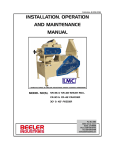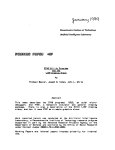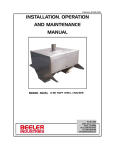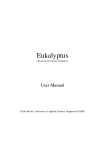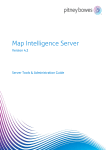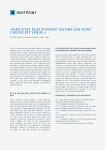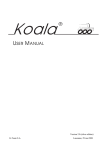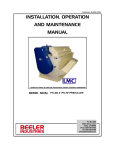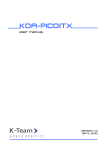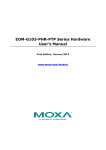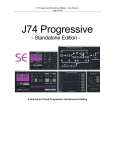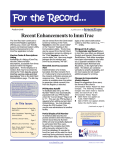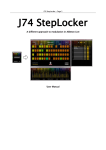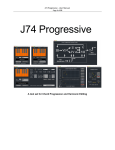Download Map blueprint
Transcript
Eukalyptus (Koala Environment Simulator) User manual: Map blueprint Thabo Beeler, University of Applied Sciences, Rapperswil (HSR) 2 User manual: Map blueprint Revision History Version 0.1 0.2 When 13.06.2004 23.06.2004 What Initial version First revision. Who Thabo Beeler Thabo Beeler User manual: Map blueprint 3 Table of contents How to create a good map blueprint ............................................................................................ 4 Color encoding ........................................................................................................................ 4 Size ......................................................................................................................................... 4 Format..................................................................................................................................... 4 4 User manual: Map blueprint How to create a good map blueprint Eukalyptus is able to load and interpret image files. This provides an easy and convenient way to generate maps for the simulator, as blueprints of most buildings are available. One could simply load such a blueprint, but the resulting map may not be good. Especially doors need to be color encoded, so Eukalyptus interprets them correctly. The following instructions for blueprint pre-processing will enable you to create good blueprints. Color encoding The following color encodings are recognized by Eukalyptus. Every element in the blueprint should be colored in one of these colors. Element Door (open) Door (closed) Obstacle Go-areas No-Go-areas Color Green Blue Black White Red Code-code (hex) 0x00FF00 0x0000FF 0x000000 0xFFFFFF 0xFF0000 Sample Size The size of the image file is important, as it determines the resolution of the map. One pixel on the image is the base unit for the collision detection. The smallest object may have this dimension. Smaller objects cannot possibly be detected. If you want collision detection with an accuracy of 1 cm, you need to choose the size of the image such that one pixel on the image corresponds to 1 cm2 in the real world. Format The best formats for the images are indexed ones, like GIF, because we have just a small amount of colors. When saving the file, make sure to use a palette with exactly the amount of colors used in the map (max. 5). Turn off any dithering or smoothing, because we don’t want blurry walls.




